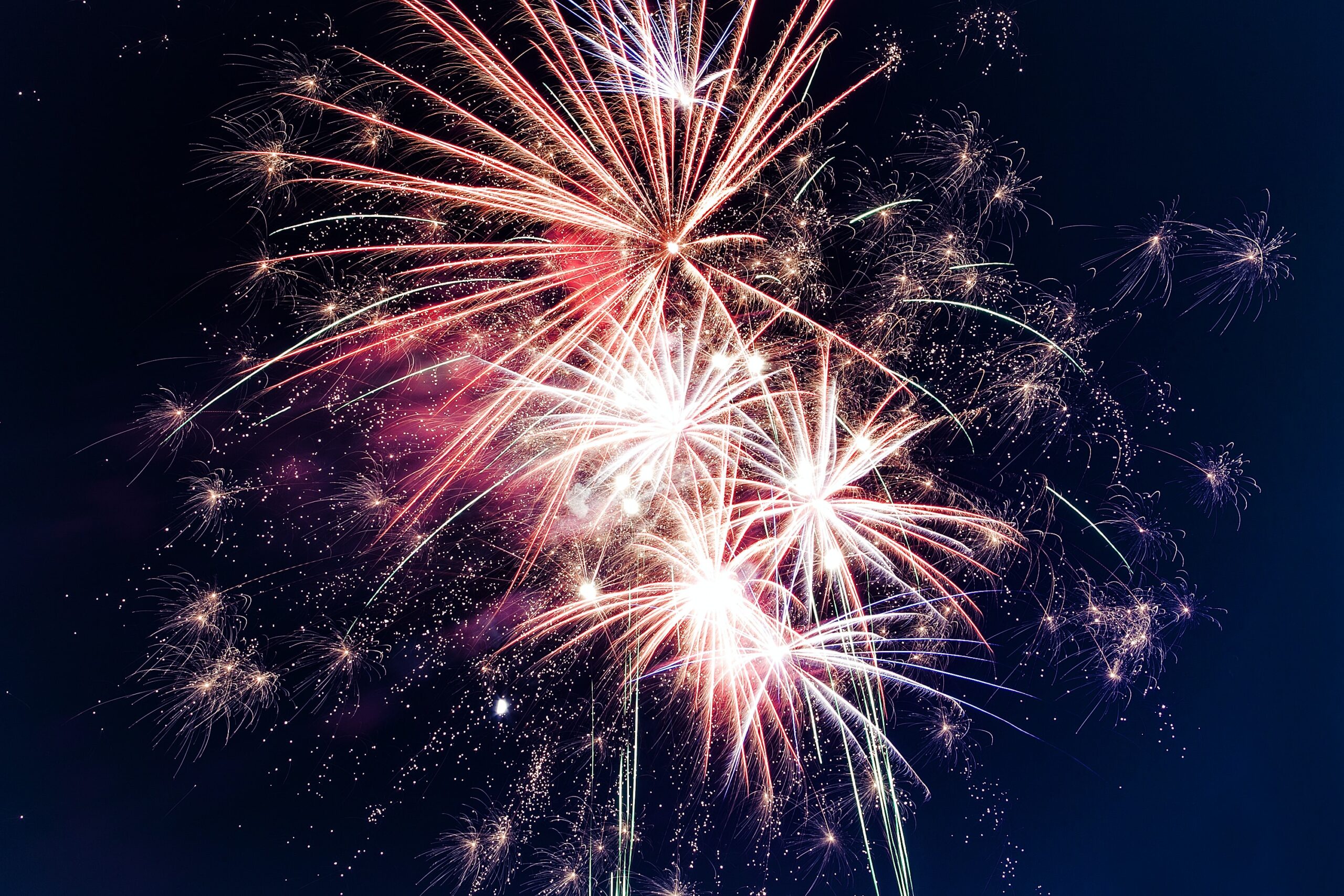Spain
Spain has a unique way of celebrating new year, with the majority of traditions rooting from history and culture. One of the most iconic is eating 12 grapes once the clock strikes at midnight on December 31st! Each grape represents a month of the year, so for each grape you eat you get a month of prosperity and good luck!
The night is usually spent with family and friends, with people dressing up and attending street parties or gathering at home for a special dinner. At midnight, fireworks light up the sky, and people toast with a glass of cava. The festivities continue into the early hours of the morning, with music, dancing, and high spirits all around!
Denmark
Denmark celebrates New Year’s Eve with a lot of fireworks, bonfires, and traditions, they are usually very noisy and this stems from back in the days when farmers thought that noise would scare off evil spirits. One of the most popular being to jump off a chair or a stool at midnight to symbolise leaping into the new year, it is said to be good luck if you do and back luck if you don’t!
Another popular tradition is to smash old plates against friends and neighbours doors! A pile of smashed plates is believed to represent more luck by the Danish. The Danes also eat a special, traditional dish called “kransekage,” a tower of ring-shaped cakes made from marzipan!
Brazil
In Brazil, New Year’s Eve, or “Reveillon,” with a lot of energy, colour, and joy. In celebration Brazilians fill the beaches to welcome in the New Year. In Rio de Janeiro alone you’ll find nearly four million people gathered to eat, drink and watch fireworks as they celebrate Reveillon!
Another popular custom is to jump seven waves at midnight, representing the seven days of the week and you should make seven wishes for the upcoming year. The festivities continue into the early hours of the morning, with music, dancing, and feasting all around.
South Africa
South Africa celebrates the New Year with a blend of traditional and modern customs. One of the most popular traditions is to light fireworks and set off firecrackers at midnight, creating a spectacular display of lights and sounds. To mark the African New Year, fields are ploughed, and the very first harvest is brought!
In Cape Town on the 2nd of January, people celebrate with a colourful carnival called the “Tweede Nuwe Jaar,” where they dress up in bright costumes and dance through the streets. Tweede Nuwe Jaar, which literally means “Second New Year” is rooted from the one day a year in which enslaved people would be allowed a day of work and be given an opportunity to celebrate.
Phillipines
In the Philippines, New Year’s Eve is a time for family gatherings and traditions. The most well-known would be eating 12 round fruits, It has to be 12, as there are 12 months in a year and they have to be round, as it is believed to bring and attract good luck. Some also associate the circular shape of the fruits with money.
There is also a tradition called “Media Noche,” where families share a midnight feast of traditional Filipino dishes like lechon (roast pig) and pancit (noodles) to celebrate the new year, it is often eaten whilst watching the fireworks displays outside!
Ecuador
In Ecuador, the New Year’s Eve celebrations are known as “Año Viejo” or “Old Year.” The main tradition in the country is to burn paper scarecrow-like dolls at midnight of December 31st. This ritual symbolises the burning of the old year’s negative energy and the welcoming of new beginnings.
As well as Spain, Ecuador also celebrate by eating 12 grapes, with each representing a month of goof fortune for the year. They also wear yellow clothing or yellow underwear as it said to bring good luck!
Scotland
For Scotland, the New Year’s Eve celebration is called “Hogmanay” and it is the country’s most significant holiday. The festivities can last for several days and include street parties, live music, and traditional Scottish food and drink. The smoking sticks created, known as the Hogmanay, would be ignited to create smoke and scare off evil spirits.
Additionally, there is something known as first-footing, the first-foot is the first person to enter the home of a household on New Year’s Day and is seen as a bringer of good fortune for the coming year, the first –footer would traditionally arrive with gifts to give home.
Japan
Japan celebrates new year, known as “Oshogatsu” is one off the country’s most important holidays, it is a time to see family, cleaning and preparing traditional Japanese food! Many people go and visit a shrine at the start of the new year to wish for good fortune, a happy and healthy year alongside paying their respects.
At midnight, the bells are rung 108 times! This is a Buddhist ritual called, “Joya-no-Kane” this symbolises the 108 worldly desires that must be overcome, and each ring is thought to drive away one such passion.
